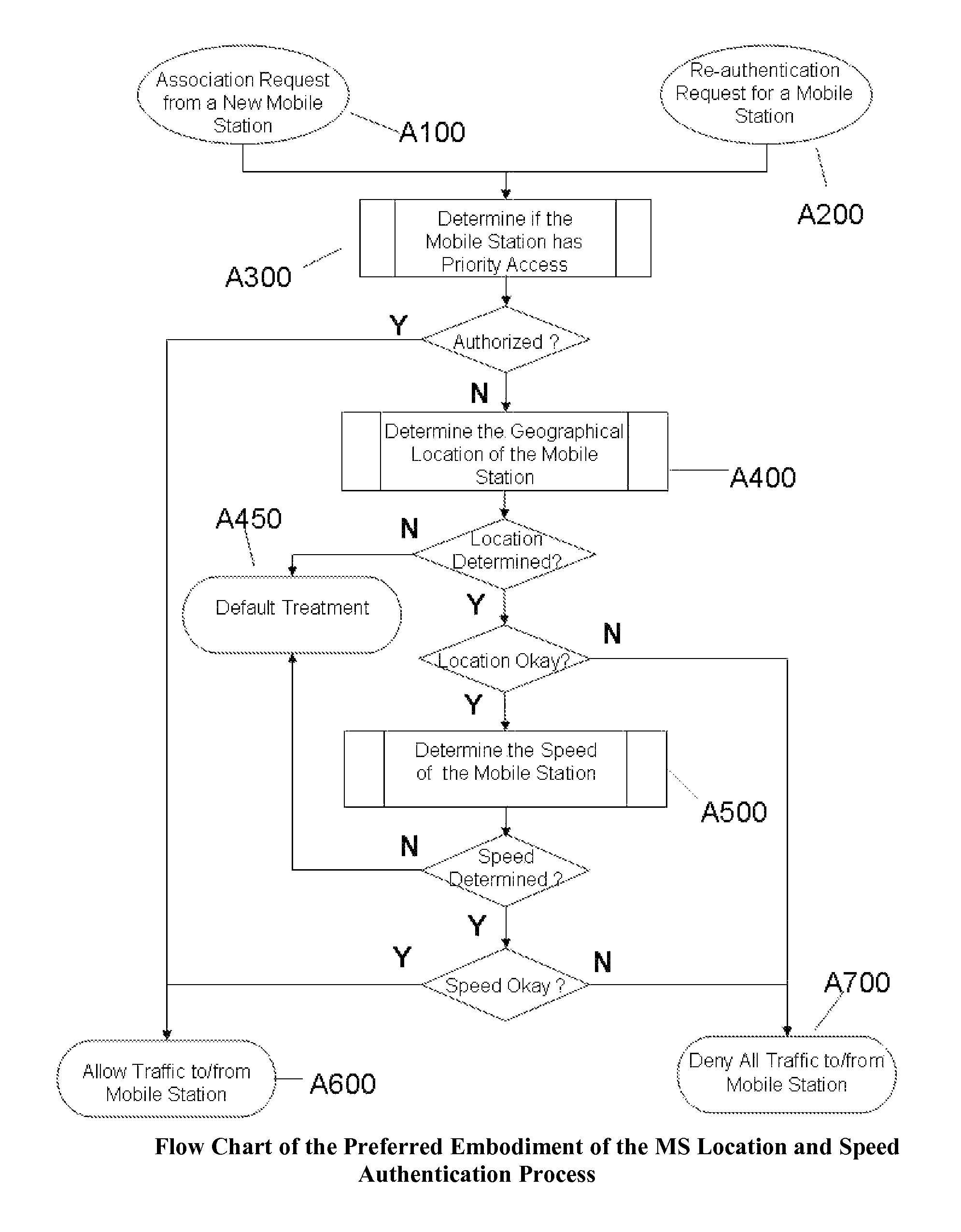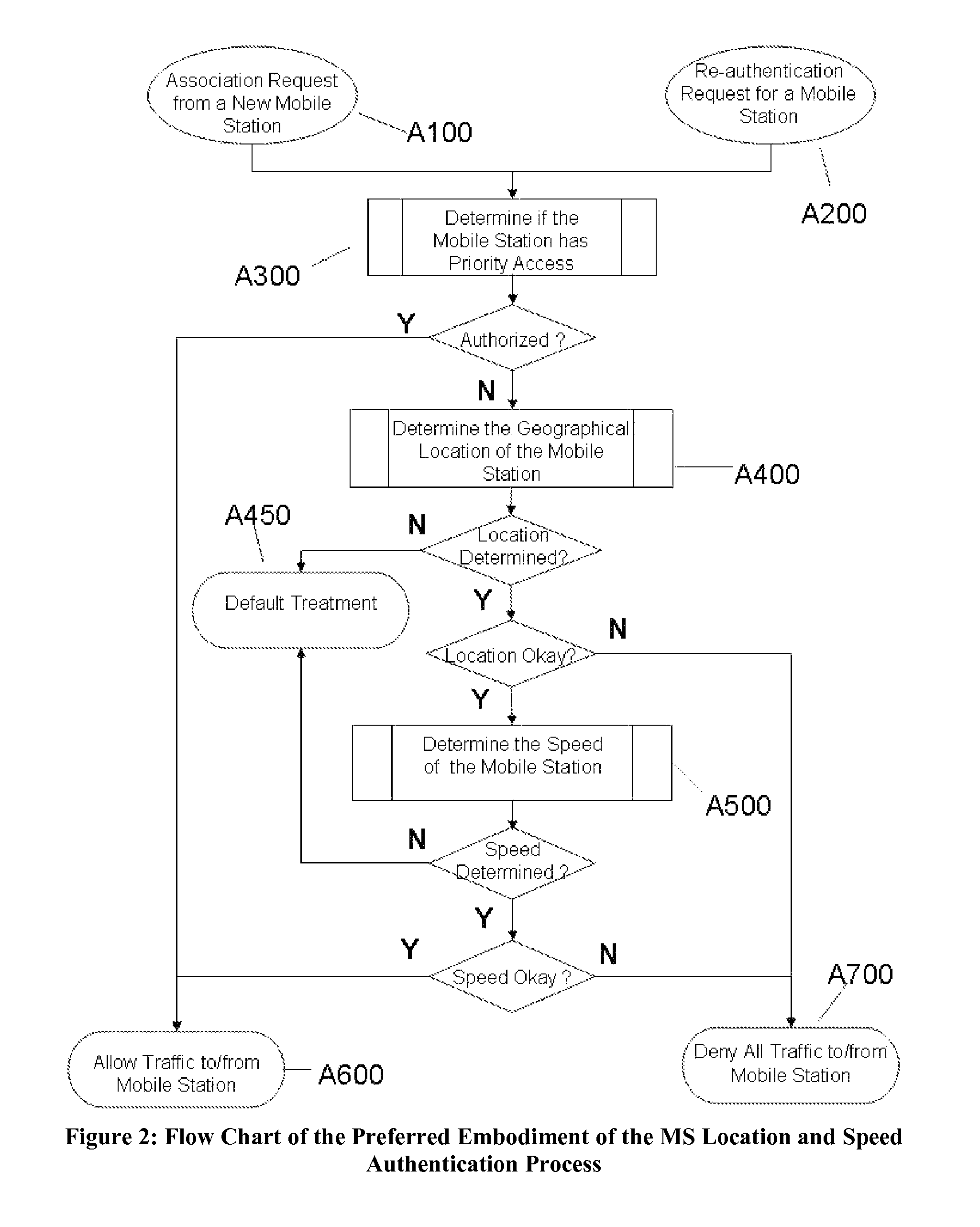Systems and methods for speed and location based network access and features control
a technology of network access and features, applied in the field of communication networks, can solve problems such as the use of these devices in undesirable places such as schools, the use of these devices at inappropriate times, and the increase of the risk of an accident in the vehicl
- Summary
- Abstract
- Description
- Claims
- Application Information
AI Technical Summary
Benefits of technology
Problems solved by technology
Method used
Image
Examples
second exemplary embodiment
[0074]The second exemplary embodiment is the same as the preferred embodiment except that the authentication process exemplified by FIG. 2 may take place in the MS itself.
third exemplary embodiment
[0075]The third exemplary embodiment is the same as the preferred embodiment except that the authentication override process is general only. That is an MS or end-user if granted override status can operate in any location and at any speed of travel.
fourth exemplary embodiment
[0076]The fourth exemplary embodiment is the same as the preferred embodiment except that should a connection request to an MS be refused because the MS is either in a forbidden location and / or traveling at a forbidden speed, the message cannot be stored to view later.
PUM
 Login to View More
Login to View More Abstract
Description
Claims
Application Information
 Login to View More
Login to View More - R&D
- Intellectual Property
- Life Sciences
- Materials
- Tech Scout
- Unparalleled Data Quality
- Higher Quality Content
- 60% Fewer Hallucinations
Browse by: Latest US Patents, China's latest patents, Technical Efficacy Thesaurus, Application Domain, Technology Topic, Popular Technical Reports.
© 2025 PatSnap. All rights reserved.Legal|Privacy policy|Modern Slavery Act Transparency Statement|Sitemap|About US| Contact US: help@patsnap.com



